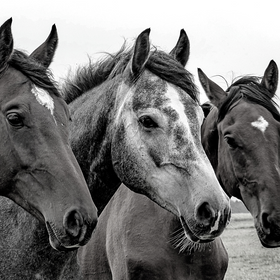
When Should I Replace My Helmet?
You replace the tires on your vehicle after so many miles to keep your vehicle safe. You replace your pillows every few years due to loss of cushion. There are a lot of things that you regularly replace because of wear and tear.
Did you know that you should … no, must … do the same with your riding helmet?
Just as with your mattress, there is a date printed on a tag for your riding helmet. It’s not just there for posterity’s sake, but so you know the manufacture date of that particular helmet. Because of this date, there’s no need to keep your receipt so you know when you purchased it. But, if by chance you don’t even remember when or where you purchased your helmet, and the date on the tag of your helmet is faded, then it’s probably time to get fitted for a new One K helmet.

Helmet manufacturers, including One K, generally recommend that you replace your helmet every four to five years, at the absolute maximum. The timeline for replacement can be a lot shorter depending on the level of use, the climate, and if you’ve had any accidents while wearing the helmet.
This means you shouldn’t be comfortable wearing your old helmet just because it’s “broken in”. Just as with a mattress or pillow that is past its prime, so is your helmet.
Why the timeline?
If you ride on a regular schedule, at least three times a day, you know how much laundry you go through in a week because of sweat and dirt on your clothes. But you can’t toss your helmet in the washer, so it accumulates hours, days and years’ worth of sweat, dust and dirt on the inside. The outside has taken a beating as well, from those rides in the pouring rain to scuffs from a slight drop from the tack box to the concrete floor. All of that combined can mean the material inside starts to break down, the protective coating on the outside loses its luster, and your helmet’s overall effectiveness at protection has decreased.
The manufacturers timeline is more of a guideline than an absolute. A helmet that is worn regularly will deteriorate faster than one used only an hour a week. A helmet kept in air conditioned storage place would be ideal as it will be kept cool and dry.
After a Fall
The factors that could lead to an earlier demise to your helmet are what can ultimately lead to injury for you. If you’ve fallen off your horse while wearing your helmet, that impact (no matter how minor) can reduce the effectiveness of your helmet’s protection.
Even instances such as dropping your helmet on a hard surface can cause the need to seek out a new helmet. Damage to the helmet is not always visible to the naked eye, so it’s never a safe assumption that your helmet is still in pristine shape after a fall even if you don’t see any visible damage. Dents or cracks in the Styrofoam are mostly covered by the helmet’s shell and harder to see. If there is any damage noted on the shell (marks, cracks or crushes) and damage to fasteners or straps, this indicates the need for replacement before your next ride.
All helmet manufacturers, including One K, advise that after any catastrophic incident you must replace your helmet. One K Helmets has a replacement policy for the benefit of their riders. If you are wearing your One K helmet, and you’re in an accident within the set replacement period (three years after purchase), we urge you to return your helmet to One K for a set replacement cost. Never ride in the same helmet you wore in an accident.
One K will replace your helmet purchased in the United States for a replacement cost plus shipping. They just ask that you fill out the Return Authorization Form and return it with your damaged helmet, copy of your dated sales receipt plus a signed and dated letter describing the accident in as much detail as can be provided.
Tips to Prolong the Life and Use of Your Helmet
- To ensure you can get as much use out of your helmet as possible, without any accidents involved, it’s important to take great care in the storage and use of your helmet on a daily basis.
- Avoid storing your helmet in direct sunlight or extreme heat (158°F or higher), such as in your vehicle on a hot summer day, because the heat will cook and melt the polystyrene in your helmet.
- Clean your helmet regularly, but only with products made specifically for helmet cleaning. Using cleaning agents such as dish soap and solvents can damage your helmet.
- After a ride, allow your helmet to air dry before you store it in a case or trunk. Using a helmet bag will help protect the exterior from getting battered in transport or storage.'





